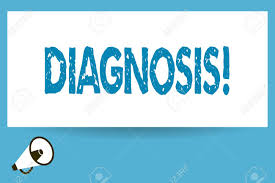
Identification of the illness
Order Instructions:
Introduction
While treating the chronically ill, a major challenge is developing a plan of care that addresses the specific needs of a patient and a caregiver. You need to be in close touch with patients and their support group, family and peers, to come up with an ideal plan.
In this course project, you are going to develop a plan of care for a chronic illness group of your choice. While executing the tasks of this project, remember that while you need to give a general overview of the biomedical considerations of the case, the focus should always be on the psychosocial elements. Your perspective in this care plan should be the patient’s goals rather than that of the medical team.
Each week, you will complete a part of this project. You will submit a final completed project in Week 5. This course project will count for 40 percent of your grade, so be sure to take the time to carefully complete each of the weekly assignments and then put it all together in Week 5.
Ensure that you save a copy of this course project after you have submitted it at the end of this course. You are expected to resubmit this project along with the other course projects at the end of the Registered Nurse (RN) to Bachelor of Science in Nursing (BSN) program. File Transfer Protocol (FTP) details will be provided in the Capstone course.
Identifying a Group
Identify an area of chronic illness (something in the area of oncology) of specific interest to you. Explain your choice and your interest in it. Prepare a questionnaire utilizing your knowledge of health and illness, with the aim of acquiring all information you need from patients to prepare a plan of care for the specific illness group.
Support your responses with examples.
Cite any sources in APA format.
SAMPLE ANSWER
Identification of the illness
The care for chronic illness requires articulate plans that involve the care giver and the patient. This is crucial especially in the oncology related illnesses. The chronic illness in the area of oncology that is addressed in this is cancer. Cancer illness has been on the increase in the recent times. Although there has not been a well known cause of cancer, this chronic illness has been associated with lifestyle that is subjective to the prevalent conditions for its development. There is interest in the care for this chronic illness because it subjects the patients to lots of pain and discomfort, hence, the need for nurses to articulate the care necessary for this chronic illness.
Much interest to this oncology chronic illness has emanated from the realization that early detection can lead to better treatment and even cure. On the other hand, for those that the detection comes a bit late, they are subjected to endure the bitter toil of the disease for the rest of their lives. Stricker & O’Brien (2014) observe that; this would interest a nurse in the making to choose this kind of ailment to develop the plan for care for it. The interest follows the urge to see that the patients of this chronic illness are subjected to a care that is well planned such that the pain and discomfort is minimized. It is also crucial that those patients live a fulfilling life despite the challenges of the chronic illness. In this sense, it would be crucial to have a plan that encourages and enables the patients to engage in the( healthy ) activities that they used to engage in before so as not to feel to have been thrown out of life by the illness.
It is also crucial to have a plan that enables the patients to engage in economical activities up to the maximum time possible. This is very crucial considering the economic impact of the illness. Cancer is associated with a lot of economical demands. This follows the high cost of the drugs and the processes employed in the treatment such as chemotherapy. Garland (2015) observes that; these utilize huge finances and if the patient comes from a weak background financial, it would be difficult to afford those services. Cancer illness also requires that the patient uses a healthy diet so as to boost the immunity. This is costly especially in consideration of the high cost of fruits that are much needed in the diet in order to keep a healthy diet.
In the preparation of plan of care, the interests of the patient as well as that of the care giver are put in to consideration. In order to come up with a viable plan for the cancer patients, it is crucial that the nurse making the plan considers the interest of the patient more than the interest of the care giver. Dulko, Pace, Dittus, Sprague et al (2013) note that; there is always expectation of difficulties to be encountered especially where there are languages or cultural barriers. However, the crucial point here is to engage the patient in the conversation and not just to have the plan in a document. In order to understand the interest of the patient it is crucial that the care giver engages in interaction with the patient to understand them well. This also calls for asking of questions to the patient so as to come up with a plan that is quite suitable for them. In order to acquire the required information, it is crucial that the involved nurse prepares the questions to be asked to the cancer patients in a bid to get direction to the care plan that suits them. Such questions would include:
Personal details: these include their name, age, gender and maybe some little background on them.
Specific diagnosis: It would be crucial for the nurse to establish whether the patient understands the specific diagnosis of their illness.
Initial treatment plan: The nurse should seek to understand what initial plans the patient had about the treatment of the disease. This helps the nurse to align the plan to the initial expectation.
Expected common and rare toxicities: The nurse establishes the toxicities expected and the allergies that the patient may have.
Who will take care of specific aspects of treatment and their side effects: this touch on the person that will be responsible in case the patient is subjected to conditions that do not allow them to be responsible for some of their personal issues?
Psychosocial and supportive care plans: the nurse asks the patient about the expectations of the patient about psychological and social support. For instance, I they would encourage visits to their residence to be guided on issues concerning the disease or if they would be willing to join support groups.
Vocational and financial concerns: For instance, would they still continue with their current jobs?
Advanced care directives and preferences: The nurse establishes the anticipation of the patient about advanced care directives and what they would prefer.
References
Dulko, D., Pace, C. M., Dittus, K. L., Sprague, B. L., Pollack, L. A., Hawkins, N. A., & Geller, B. M. (2013). Barriers and Facilitators to Implementing Cancer Survivorship Care Plans. Oncology Nursing Forum, 40(6), 575-580. doi:10.1188/13.ON
GARLAND, S. B. (2015). Planning Checklist For Chronic Illness. Kiplinger’s Retirement Report, 22(1), 1-4.
Stricker, C. T., & O’Brien, M. (2014). Implementing the Commission on Cancer Standards for Survivorship Care Plans. Clinical Journal Of Oncology Nursing, 1815-22. https://www.doi:10.1188/14.CJON.S1.15-22
We can write this or a similar paper for you! Simply fill the order form!












